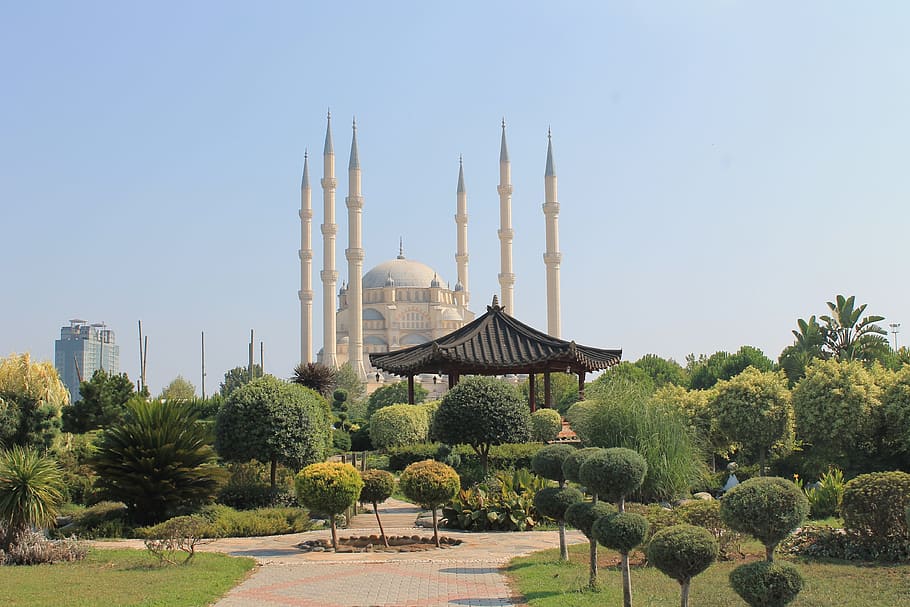
Adana
Visit the guide

Adıyaman
Visit the guide
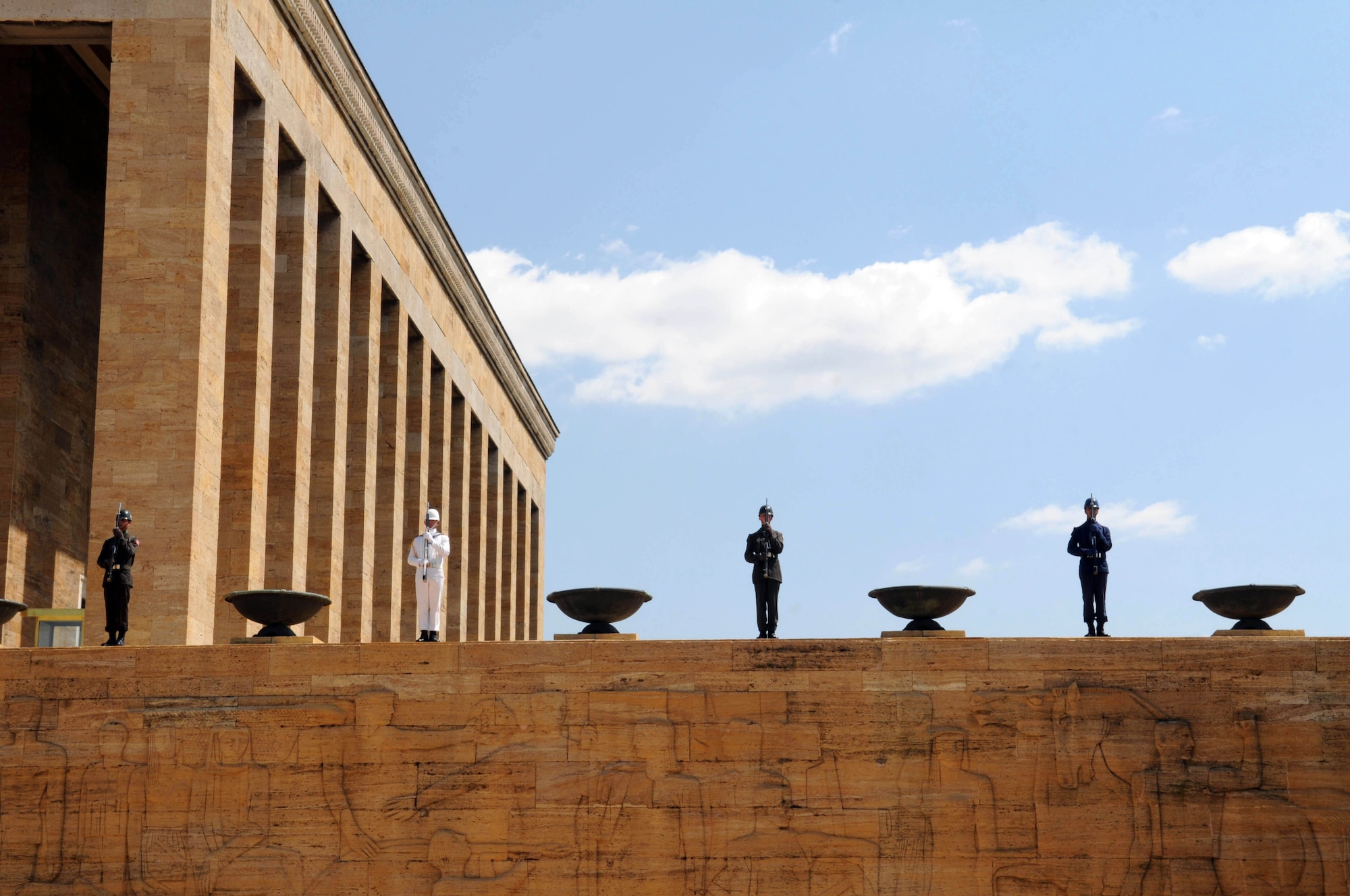
Ankara
Visit the guide
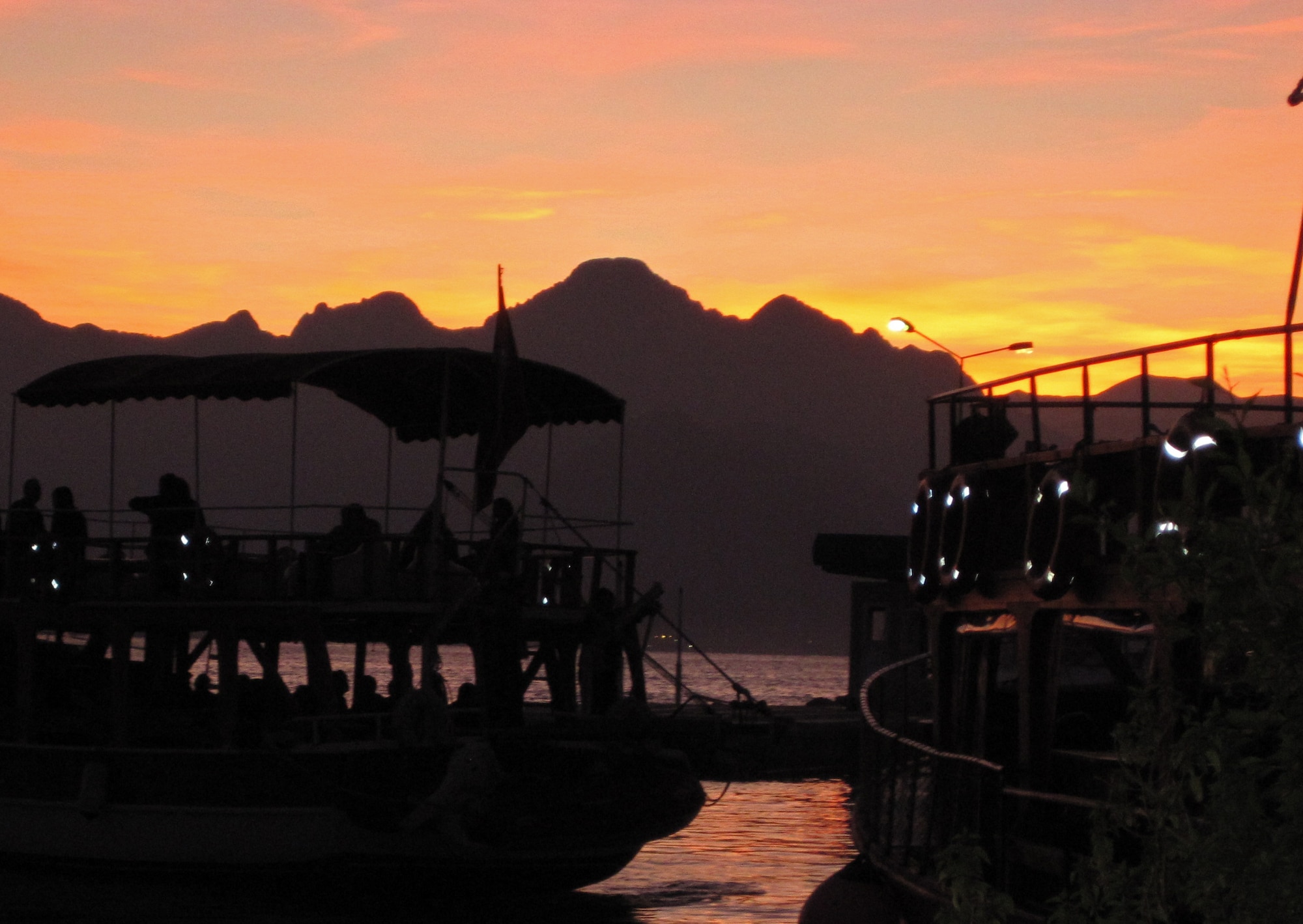
Antalya
Visit the guide
Aydın
Visit the guide

Balıkesir
Visit the guide
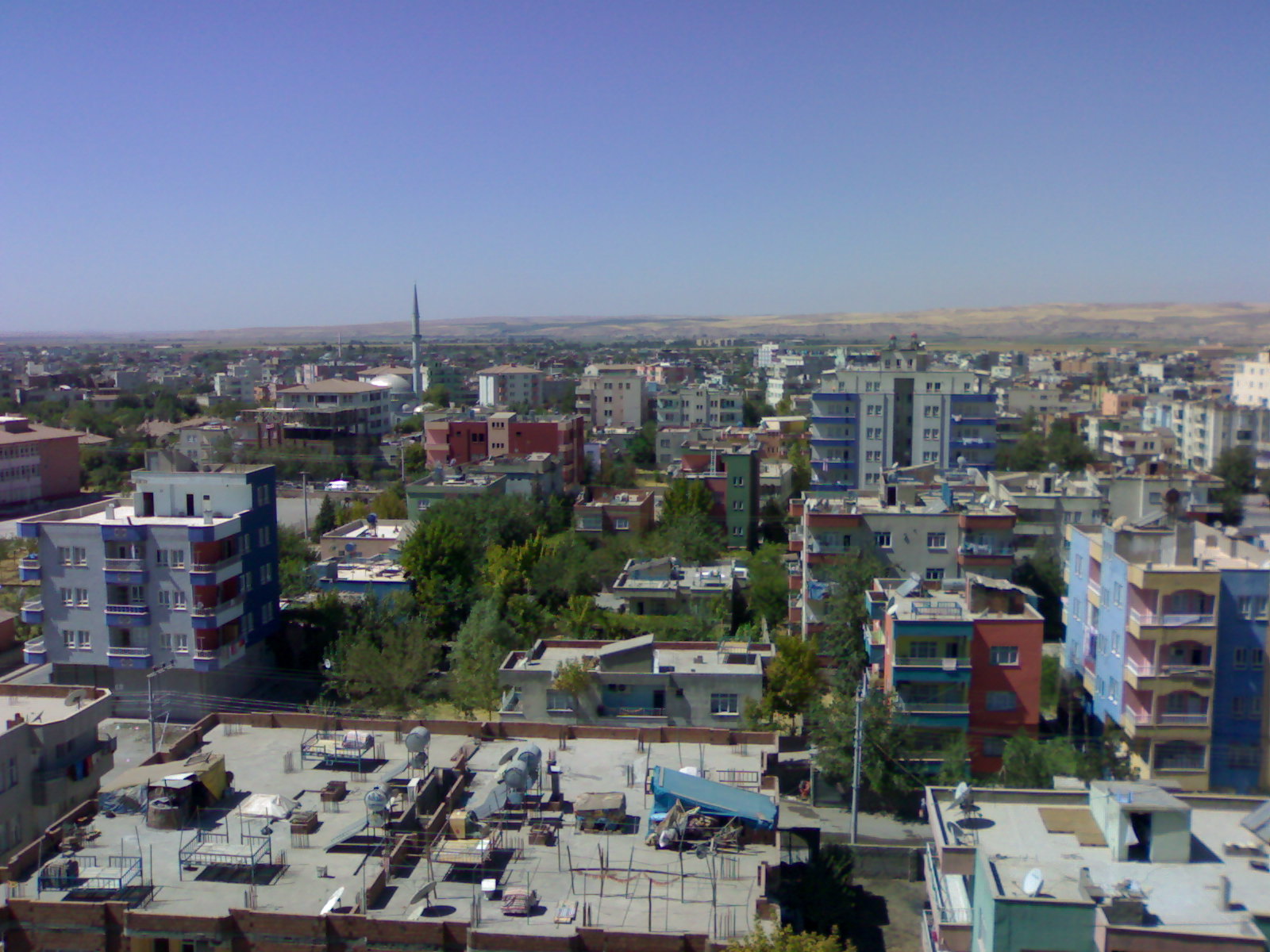
Batman
Visit the guide

Bursa
Visit the guide

Denizli
Visit the guide

Diyarbakır
Visit the guide

Elazığ
Visit the guide
Erzurum
Visit the guide

Gaziantep
Visit the guide

Hatay
Visit the guide
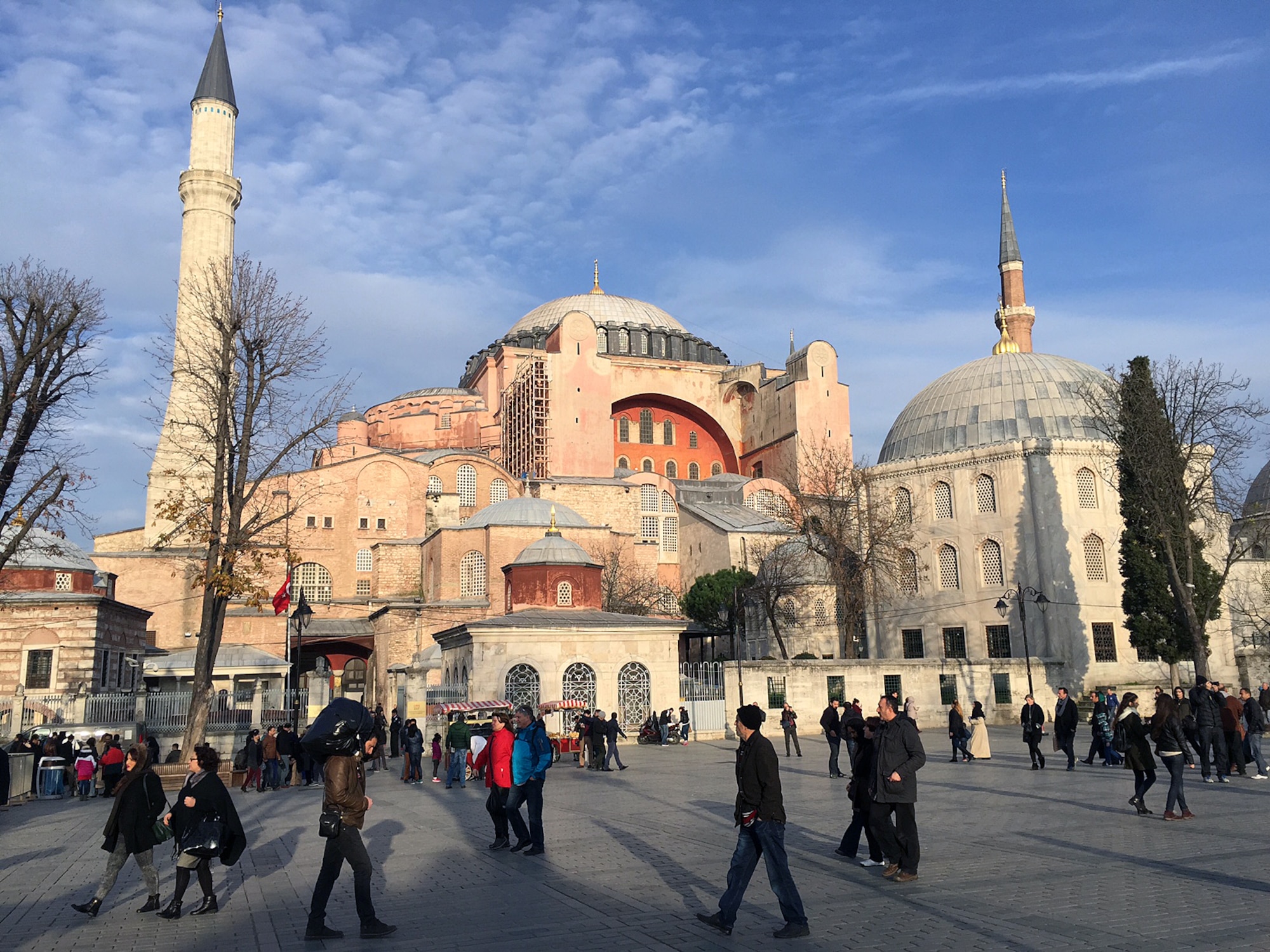
Istanbul
Visit the guide
Izmir
Visit the guide

Kahramanmaraş
Visit the guide
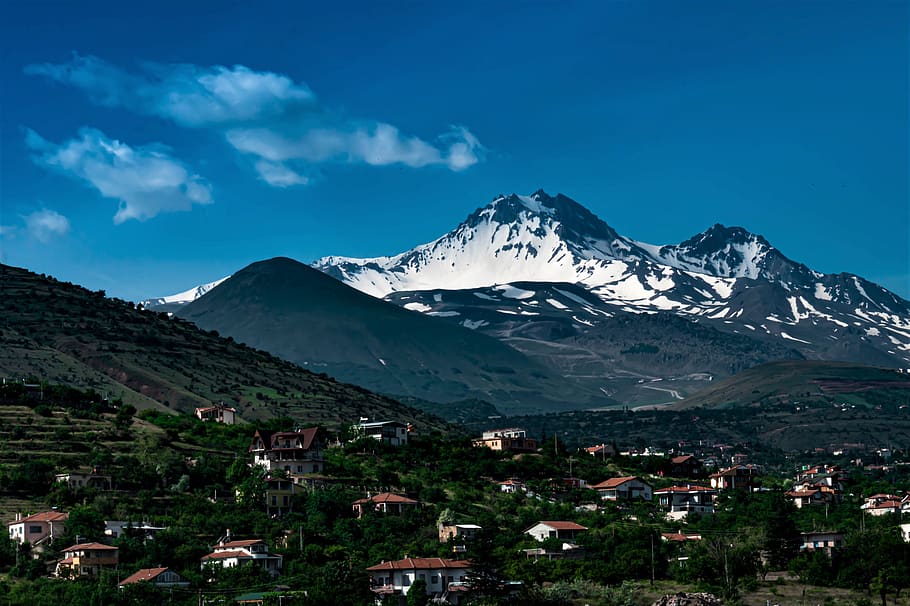
Kayseri
Visit the guide
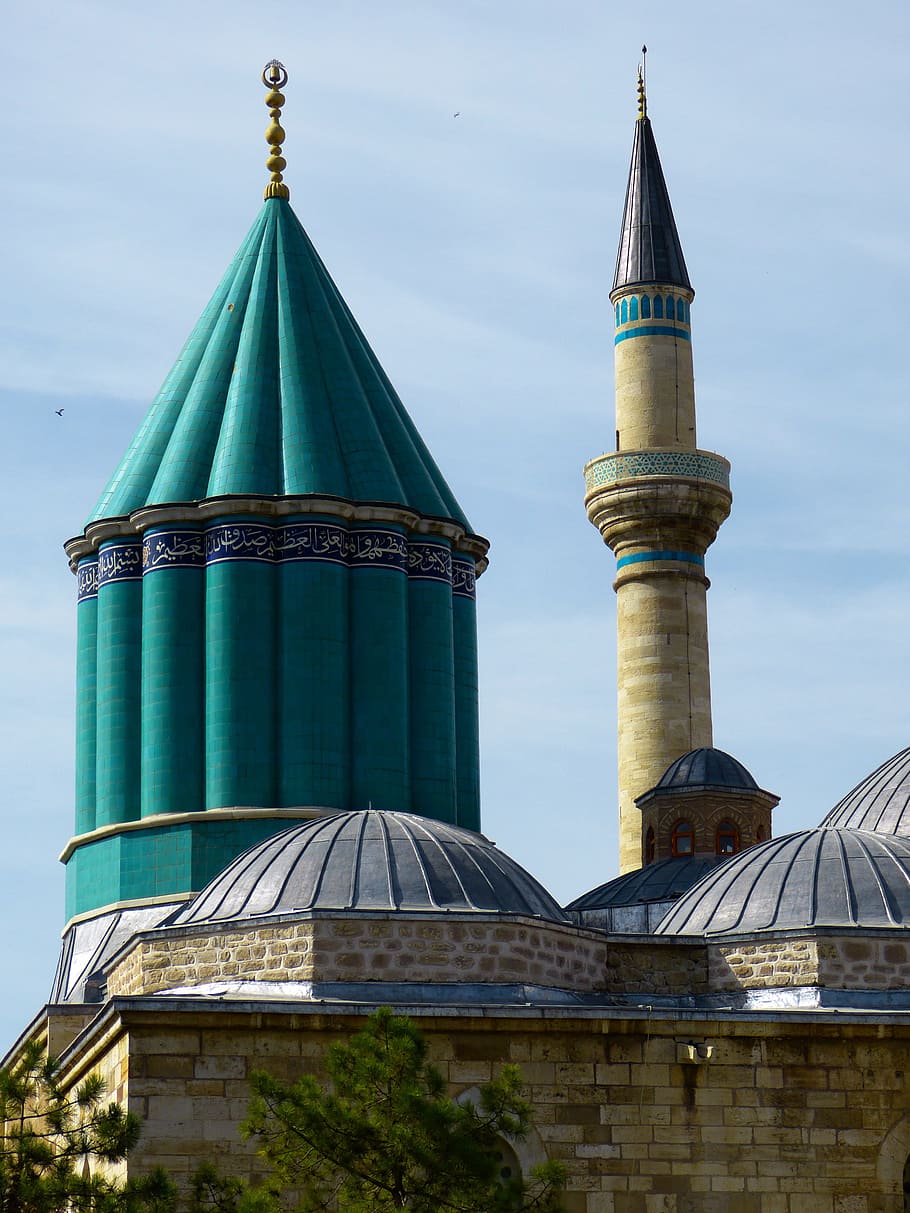
Konya
Visit the guide

Malatya
Visit the guide

Manisa
Visit the guide

Mersin
Visit the guide

Osmaniye
Visit the guide

Samsun
Visit the guide

Sivas
Visit the guide
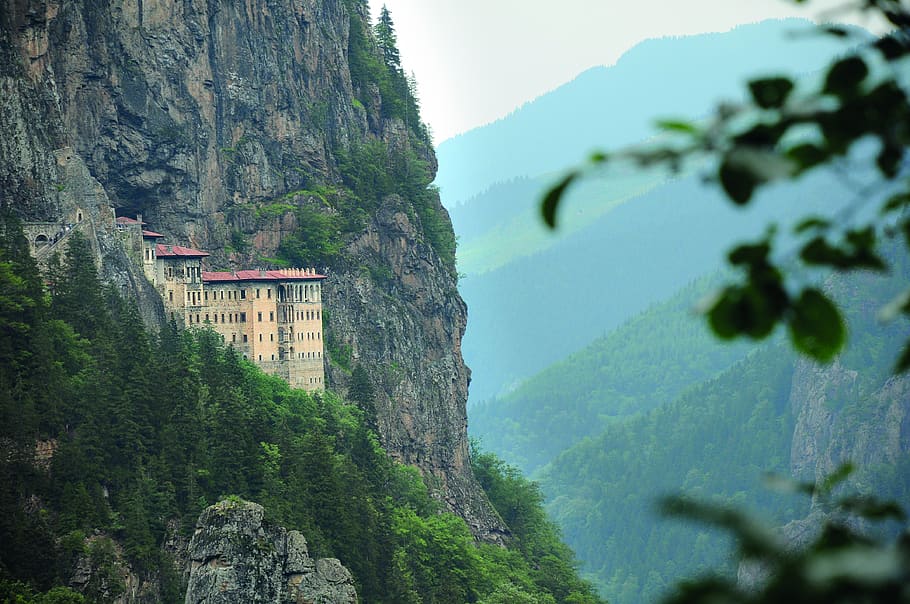
Trabzon
Visit the guide

Van
Visit the guide

Çorum
Visit the guide
İzmit
Visit the guide

Şanlıurfa
Visit the guide
festivites
Here are some of the major festivities and holidays celebrated in Turkey:
1. Eid al-Fitr: This is a religious holiday that marks the end of Ramadan, the month of fasting for Muslims. It is celebrated on the first day of Shawwal, the tenth month in the Islamic calendar. People dress up in new clothes, attend special prayer services, and exchange gifts with friends and family.
2. Republic Day: Celebrated on October 29th, this holiday commemorates the establishment of the Turkish Republic in 1923. Festivities include parades, fireworks, and other public events.
3. National Sovereignty and Children's Day: Observed on April 23rd, this holiday celebrates the founding of the Grand National Assembly of Turkey in 1920. It is also a day to honor children, who participate in various events and activities.
4. Victory Day: Held on August 30th, this holiday marks the Turkish victory over Greek forces in the Battle of Dumlupınar in 1922. There are military parades, speeches, and other commemorative events.
5. New Year's Eve: As in many other countries, people celebrate New Year's Eve on December 31st by attending parties, watching fireworks displays, and counting down to midnight.
6. International Women's Day: Celebrated on March 8th, this holiday honors the achievements of women and promotes gender equality. It is observed with marches, rallies, and other events all over the country.
These are just a few examples of the many celebrations and holidays in Turkey, which reflect the country's rich cultural heritage and diverse population.
seasons
There are three main tourist seasons in Turkey:
1. High Season: The high season runs from mid-June to mid-September. During this time, the weather is hot and sunny, and many tourists visit coastal areas and beach resorts. It's recommended to book accommodation and transportation in advance as prices can be higher than other times of the year.
2. Shoulder Season: The shoulder season runs from April to mid-June and mid-September to October. During this time, the weather is still warm, but not as hot as during the high season. It's a great time to visit popular destinations without the crowds. Hotels and flights may be cheaper than during the high season.
3. Low Season: The low season runs from November to March. During this time, the weather can be cold and rainy, except for the southeast region where it's generally milder. Many tourist attractions and hotels may be closed or have limited operating hours. However, it's a great time to experience Turkey's winter activities such as skiing, hot air ballooning, and visiting thermal baths. Prices for accommodations and flights are typically lower compared to the high season.
visa
Some special VISA rules for visiting Turkey depend on the country of citizenship and the purpose of the visit. Here are a few examples:
1. Citizens of some countries, including the United States, the United Kingdom, Canada, and Australia, can apply for an e-Visa online before traveling to Turkey. The cost of an e-Visa is around $35 USD.
2. Citizens of some other countries may need to apply for a visa in person at a Turkish embassy or consulate. The cost of a visa varies depending on the type and duration of the visa, but can generally range from around $60 to $200 USD.
3. For certain types of visits, such as work or study, additional documentation and permits may be required. The cost of these additional requirements can vary widely depending on the specific circumstances.
It is important to note that visa rules and costs can change over time, so it is always best to check with the relevant authorities or a professional travel agency for the most up-to-date information.
souvenirs
Some of the best souvenirs to buy from Turkey include:
1. Turkish carpets and kilims: Prices vary depending on the size, quality, and design. You can find them in Istanbul's Grand Bazaar, Kapalicarsi, or at the Carpet Museum of Istanbul.
2. Turkish tea and coffee sets: Prices range from 50 TL to 500 TL. You can find them in local shops and markets in Istanbul, Ankara, and other cities.
3. Turkish Delight: Prices start around 10 TL for a small box. You can find them in sweet shops and markets across Turkey.
4. Evil Eye Talisman: Prices start at around 5 TL. You can find them in almost any shop or market across Turkey.
5. Turkish ceramics and pottery: Prices vary depending on the item's size and intricacy. You can find them in Istanbul's Grand Bazaar, Kapalicarsi, or in Kutahya and Avanos.
6. Turkish spices: Prices vary depending on the type and quantity. You can find them in spice shops and markets across Turkey, especially in Istanbul's Spice Bazaar.
7. Turkish towels and bathrobes: Prices vary depending on the quality and size. You can find them in local shops and markets in Istanbul, Bodrum, and other coastal cities.
The average prices mentioned above are subject to change based on location, quality, and availability.
If you have 1 week
Wonderful! Turkey is a country with an incredibly rich history and culture, so there are many amazing places to visit. Here's a one-week itinerary that I think you will really enjoy:
Day 1: Istanbul
Start your trip off in Istanbul, the cultural and historical heart of Turkey. Visit the Blue Mosque, Topkapi Palace, and the Hagia Sophia to get a sense of the city's past. Take a stroll through the Grand Bazaar and Spice Market to experience its vibrant present.
Day 2: Cappadocia
Head down to Cappadocia to see its famous fairy chimneys and otherworldly landscape. Take a hot air balloon ride for a truly unforgettable experience, and explore some of the ancient underground cities like Derinkuyu.
Day 3: Pamukkale
Pamukkale is home to some of the most stunning natural hot springs and terraced pools in the world. Spend the day relaxing in these thermal baths and taking in the picturesque views.
Day 4: Ephesus
Ephesus was once a thriving ancient Greek city, and today it boasts some of the best-preserved ruins in the world. See the Temple of Artemis, the Library of Celsus, and the Great Theatre to get a sense of what life was like in this bustling metropolis.
Day 5: Antalya
Antalya is a coastal city known for its gorgeous beaches and crystal-clear waters. Spend the day lounging on the sand or swimming in the sea, and make sure to try some of the delicious seafood that this region is known for.
Day 6: Mount Nemrut
Located in southeastern Turkey, Mount Nemrut is home to an incredible collection of statues that date back to the first century BC. The site is also known for its stunning panoramic views of the surrounding landscape.
Day 7: Konya
Konya is a city that is famous for its connection to the Sufi mystic Rumi, and it's home to several of his most important works. Visit the Mevlana Museum to learn more about his life and teachings, and enjoy the peaceful atmosphere in this serene city.
I hope this itinerary gives you some inspiration for your travels! These destinations are all unique and special in their own way, and I'm confident that you will have an incredible time exploring them.
If you have 2 weeks
Excellent choice! Turkey is a beautiful country with a rich history and culture, pristine beaches, and breathtaking landscapes. Here's my itinerary for you:
Week 1: Istanbul, Cappadocia, and Pamukkale
- Start your trip in Istanbul, the largest city in Turkey, and explore its historical landmarks such as the Blue Mosque, Hagia Sophia, and Topkapi Palace.
- Take a hot air balloon ride over the surreal landscapes of Cappadocia and marvel at the fairy chimneys, underground cities, and rock-cut churches.
- Relax in the thermal pools of Pamukkale, which are believed to have healing properties due to their high mineral content.
Week 2: Bodrum, Antalya, and Fethiye
- Visit Bodrum, a popular seaside town known for its vibrant nightlife, stunning marina, and ancient ruins like the Mausoleum at Halicarnassus and Bodrum Castle.
- Head to Antalya and bask in the sun on its beautiful beaches or explore the old town, Kaleici, with its narrow streets, Ottoman-era houses, and ancient Roman harbor.
- End your trip in Fethiye, a charming coastal town nestled among pine forests and known for its crystal-clear waters, scenic boat tours, and Lycian tombs carved into the cliffs.
Overall, this itinerary will give you a taste of Turkey's diverse geography and culture, from the bustling metropolis of Istanbul to the tranquil natural wonders of Cappadocia and Pamukkale, to the idyllic coastal towns of Bodrum, Antalya, and Fethiye. Each destination offers something unique, and together they showcase the beauty and diversity of this amazing country.
Culture
Turkey has a very diverse culture that is a blend of various elements of the Turkic, Anatolian, Byzantine and Ottoman cultures (the latter was in many aspects a continuation of both the Greco-Roman and Islamic cultures) with Western culture and traditions, a process that started with the Westernization of the Ottoman Empire and still continues today. This mix originally began as a result of the encounter of the Turks and their culture with those of the peoples they came across during their migration from Central Asia to the West. Contemporary Turkish culture during the republican period is a product of efforts to create a "modern" Western society, while maintaining traditional, religious and historical values.
Turkish culture has also influenced European art and fashion, particularly between the 16th and 18th centuries, during the peak of Ottoman power — a phenomenon that was called Turquerie.
Ottoman miniature is linked to the Persian miniature tradition and is likewise influenced by Chinese painting styles and techniques. The words tasvir or nakış were used to define the art of miniature painting in Ottoman Turkish. The studios the artists worked in were called nakkaşhane. The miniatures were usually not signed, perhaps because of the rejection of individualism, but also because the works were not created entirely by one person; the head painter designed the composition of the scene, and his apprentices drew the contours (which were called tahrir) with black or coloured ink and then painted the miniature without creating an illusion of depth. The head painter, and much more often the scribe of the text, were indeed named and depicted in some of the manuscripts. The understanding of perspective was different from that of the nearby European Renaissance painting tradition, and the scene depicted often included different time periods and spaces in one picture. They followed closely the context of the book they were included in, more illustrations than standalone works of art. Nakkaş Osman and Matrakçı Nasuh (1480–1564) are among the most prominent artists of this era.
Turkish painting, in the Western sense, developed actively starting from the mid 19th century. The first painting lessons were scheduled at what is now the Istanbul Technical University (then the Imperial Military Engineering School) in 1793, mostly for technical purposes. In the late 19th century, human figure in the Western sense was being established in Turkish painting, especially with Osman Hamdi Bey (1842–1910). Impressionism, among the contemporary trends, appeared later on with Halil Pasha (c. 1857–1939). Other important Turkish painters in the 19th century were Ferik İbrahim Paşa (1815–1891), Osman Nuri Paşa (c. 1839–1906), Şeker Ahmet Paşa (1841–1907), and Hoca Ali Riza (1864–1939).
The young Turkish artists sent to Europe in 1926 came back inspired by contemporary trends such as Fauvism, Cubism and Expressionism, still very influential in Europe. The later "Group D" of artists led by Abidin Dino, Cemal Tollu, Fikret Mualla, Fahrünnisa Zeid, Bedri Rahmi Eyüboğlu, Adnan Çoker and Burhan Doğançay introduced some trends that had lasted in the West for more than three decades. Other important movements in Turkish painting were the "Yeniler Grubu" (The Newcomers Group) of the late 1930s; the "On'lar Grubu" (Group of Ten) of the 1940s; the "Yeni Dal Grubu" (New Branch Group) of the 1950s; and the "Siyah Kalem Grubu" (Black Pen Group) of the 1960s. Internationally acclaimed Turkish sculptors in the 20th century include Ali Hadi Bara, Zühtü Müridoğlu, İlhan Koman, Kuzgun Acar and Ali Teoman Germaner.
Carpet (halı) and tapestry (kilim) weaving is a traditional Turkish art form with roots in pre-Islamic times. During its long history, the art and craft of weaving carpets and tapestries in Turkey has integrated numerous cultural traditions. Apart from the Turkic design patterns that are prevalent, traces of Persian and Byzantine patterns can also be detected. There are also similarities with the patterns used in Armenian, Caucasian and Kurdish carpet designs. The arrival of Islam in Central Asia and the development of Islamic art also influenced Turkic patterns in the medieval period. The history of the designs, motifs and ornaments used in Turkish carpets and tapestries thus reflects the political and ethnic history of the Turks and the cultural diversity of Anatolia. However, scientific attempts were unsuccessful, as yet, to attribute a particular design to a specific ethnic, regional, or even nomadic versus village tradition.
The earliest examples of Turkish paper marbling, called ebru in Turkish, are said to be a copy of the Hâlnâme by the poet Arifî. The text of this manuscript was rendered in a delicate cut paper découpage calligraphy by Mehmed bin Gazanfer and completed in 1540, and features many marbled and decorative paper borders. One early master by the pseudonym of Şebek is mentioned posthumously in the earliest Ottoman text on the art known as the Tertib-i Risâle-i Ebrî, which is dated based on internal evidence to after 1615. The instructions for several ebru techniques in the text are accredited to this master. Another famous 18th-century master by the name of Hatip Mehmed Efendi (died 1773) is accredited with developing motifs and perhaps early floral designs, although evidence from India appears to contradict some of these reports. Despite this, marbled motifs are commonly referred to as hatip designs in Turkey today.
Turkish literature is a mix of cultural influences. Interaction between the Ottoman Empire and the Islamic world along with Europe contributed to a blend of Turkic, Islamic and European traditions in modern-day Turkish music and literary arts. Turkish literature was heavily influenced by Persian and Arabic literature during most of the Ottoman era.
The Tanzimat reforms of the 19th century introduced previously unknown Western genres, primarily the novel and the short story. Many of the writers in the Tanzimat period wrote in several genres simultaneously: for instance, the poet Namık Kemal also wrote the important 1876 novel İntibâh (Awakening), while the journalist Şinasi has written, in 1860, the first modern Turkish play, the one-act comedy "Şair Evlenmesi" (The Poet's Marriage). Most of the roots of modern Turkish literature were formed between the years 1896 and 1923. Broadly, there were three primary literary movements during this period: the Edebiyat-ı Cedîde (New Literature) movement; the Fecr-i Âtî (Dawn of the Future) movement; and the Millî Edebiyat (National Literature) movement.
The first radical step of innovation in 20th century Turkish poetry was taken by Nâzım Hikmet, who introduced the free verse style. Another revolution in Turkish poetry came about in 1941 with the Garip movement led by Orhan Veli, Oktay Rıfat and Melih Cevdet.
The mix of cultural influences in Turkey is dramatized, for example, in the form of the "new symbols of the clash and interlacing of cultures" enacted in the novels of Orhan Pamuk, recipient of the 2006 Nobel Prize in Literature.
The origin of Turkish theater dates back to ancient pagan rituals and oral legends. The dances, music and songs performed during the rituals of the inhabitants of Anatolia millennia ago are the elements from which the first shows originated. In time, the ancient rituals, myths, legends and stories evolved into theatrical shows. Starting from the 11th-century, the traditions of the Seljuk Turks blended with those of the indigenous peoples of Anatolia and the interaction between diverse cultures paved the way for new plays. Meddah were storytellers who performed in front of audiences during the Ottoman period. Karagöz and Hacivat are the lead characters of the traditional Turkish shadow play, popularized during the Ottoman period and then spread to most ethnic groups of the Ottoman Empire.
After the Tanzimat (Reformation) period in the 19th century, characters in Turkish theatre were modernized and plays were performed on European-style stages, with actors wearing European costumes. Following the restoration of constitutional monarchy with the Young Turk Revolution in 1908, theatrical activities increased and social problems began to be reflected at the theatre as well as in historical plays. A theatrical conservatoire, Darülbedayi-i Osmani (which became the nucleus of the Istanbul City Theatres) was established in 1914. During the years of chaos and war, the Darülbedayi-i Osmani continued its activities and attracted the younger generation. Numerous Turkish playwrights emerged in this era; some of them wrote on romantic subjects, while others were interested in social problems, and still others dealt with nationalistic themes. The first Turkish musicals were also written in this period. In time, Turkish women began to appear on stage, which was an important development in the late Ottoman society. Until then, female roles had only been played by actresses who were members of Turkey's ethnic minorities. Today there are numerous private theatres in the country, together with those which are subsidized by the government, such as the Turkish State Theatres.
The roots of traditional music in Turkey span across centuries to a time when the Seljuk Turks migrated to Anatolia and Persia in the 11th century and contains elements of both Turkic and pre-Turkic influences. Much of its modern popular music can trace its roots to the emergence in the early 1930s drive for Westernization.
With the assimilation of immigrants from various regions the diversity of musical genres and musical instrumentation also expanded. Turkey has also seen documented folk music and recorded popular music produced in the ethnic styles of Greek, Armenian, Albanian, Polish and Jewish communities, among others.
Many Turkish cities and towns have vibrant local music scenes which, in turn, support a number of regional musical styles. Despite this however, western music styles like pop music and kanto lost popularity to arabesque in the late 1970s and 1980s. It became popular again by the beginning of the 1990s, as a result of an opening economy and society. The resurging popularity of pop music gave rise to several international Turkish pop stars such as Ajda Pekkan, Sezen Aksu, Erol Evgin, MFÖ, Tarkan, Sertab Erener, Teoman, Kenan Doğulu, Levent Yüksel and Hande Yener. Internationally acclaimed Turkish jazz and blues musicians and composers include Ahmet Ertegun (founder and president of Atlantic Records), Nükhet Ruacan and Kerem Görsev.
The Turkish Five is a name used by some authors to identify the five pioneers of Western classical music in Turkey, namely Ahmed Adnan Saygun, Ulvi Cemal Erkin, Cemal Reşit Rey, Hasan Ferit Alnar and Necil Kazım Akses. Internationally acclaimed Turkish musicians of Western classical music include pianists İdil Biret, Verda Erman, Gülsin Onay, the Pekinel sisters (Güher and Süher Pekinel), Ayşegül Sarıca and Fazıl Say; violinists Ayla Erduran and Suna Kan; opera singers Semiha Berksoy, Leyla Gencer and Güneş Gürle; and conductors Emre Aracı, Gürer Aykal, Erol Erdinç, Rengim Gökmen and Hikmet Şimşek.
Turkish folk dance is diverse. Hora is performed in East Thrace; Zeybek in the Aegean Region, Southern Marmara and East-Central Anatolia Region; Teke in the Western Mediterranean Region; Kaşık Oyunları and Karşılama in West-Central Anatolia, Western Black Sea Region, Southern Marmara Region and Eastern Mediterranean Region; Horon in the Central and Eastern Black Sea Region; Halay in Eastern Anatolia and the Central Anatolia Region; and Bar and Lezginka in the Northeastern Anatolia Region.
The Byzantine era is usually dated from 330 AD, when Constantine the Great moved the Roman capital to Byzantium, which became Constantinople, until the fall of the Byzantine Empire in 1453. Its architecture dramatically influenced the later medieval architecture throughout Europe and the Near East, and became the primary progenitor of the Renaissance and Ottoman architectural traditions that followed its collapse. When the Roman Empire went Christian (as well as eastwards) with Constantinople as its new capital, its architecture became more sensuous and more ambitious. This new style, which would come to be known as Byzantine architecture, with increasingly exotic domes and ever-richer mosaics, spread west to Ravenna and Venice in Italy, and as far north as Moscow in Russia. This influence can be seen particularly in the Venetian Gothic architecture.
The architecture of the Seljuk Turks combined the elements and characteristics of the Turkic architecture of Central Asia with those of Persian, Arab, Armenian and Byzantine architecture. The transition from Seljuk architecture to Ottoman architecture is most visible in Bursa, which was the capital of the Ottoman State between 1335 and 1413. Following the Ottoman conquest of Constantinople (Istanbul) in 1453, Ottoman architecture was significantly influenced by Byzantine architecture. Topkapı Palace in Istanbul is one of the most famous examples of classical Ottoman architecture and was the primary residence of the Ottoman Sultans for approximately 400 years. Mimar Sinan (c.1489–1588) was the most important architect of the classical period in Ottoman architecture. He was the chief architect of at least 374 buildings that were constructed in various provinces of the Ottoman Empire in the 16th century. Sedefkar Mehmed Ağa, the architect of the Blue Mosque in Istanbul, was an apprentice of Mimar Sinan, later becoming his first assistant in charge of the office of chief architect during his absence. Mimar Sinan's works had a significant influence on Sedefkar Mehmed Ağa.
Since the 18th century, Turkish architecture has been increasingly influenced by European styles, and this can be particularly seen in the Tanzimat era buildings of Istanbul like the Dolmabahçe, Çırağan, Taksim Military Barracks (demolished), Feriye, Beylerbeyi, Küçüksu, Ihlamur and Yıldız palaces, which were all designed by members of the Balyan family of Ottoman Armenian court architects. The Ottoman era waterfront houses (yalı) on the Bosphorus also reflect the fusion between classical Ottoman and European architectural styles during the aforementioned period. Italian architect, Raimondo D'Aronco served as the chief palace architect to the Ottoman Sultan Abdülhamid II in Istanbul for 16 years. D'Aronco designed and built a large number of buildings of various types in Istanbul. The stylistic features of his works can be classified in three groups: Revivalism, reinterpretation of the Ottoman forms, Art Nouveau and Vienna Secession. Art Nouveau was first introduced to Istanbul by D'Aronco, and his designs reveal that he drew freely on Byzantine and Ottoman decorations. D'Aronco also mixed Western and Oriental styles in his work, which was likewise a notable characteristic of the designs of Alexander Vallaury in the same period.
The First National Architectural Movement in the early 20th century sought to create a new architecture, which was based on motifs from Seljuk and Ottoman architecture. The leading architects of this movement were Vedat Tek (1873–1942), Mimar Kemaleddin Bey (1870–1927), Arif Hikmet Koyunoğlu (1888–1982) and Giulio Mongeri (1873–1953). Buildings from this era are the Grand Post Office in Istanbul (1905–1909), Tayyare Apartments (1919–1922), Istanbul 4th Vakıf Han (1911–1926), State Art and Sculpture Museum (1927–1930), Ethnography Museum of Ankara (1925–1928), the first Ziraat Bank headquarters in Ankara (1925–1929), the first Türkiye İş Bankası headquarters in Ankara (1926–1929), and Bebek Mosque.
Turkish cuisine is largely the heritage of Ottoman cuisine. In the early years of the Republic, a few studies were published about regional Anatolian dishes but cuisine did not feature heavily in Turkish folkloric studies until the 1980s, when the fledgling tourism industry encouraged the Turkish state to sponsor two food symposia. The papers submitted at the symposia presented the history of Turkish cuisine on a "historical continuum" that dated back to Turkic origins in Central Asia and continued through the Seljuk and Ottoman periods.
Many of the papers presented at these first two symposia were unreferenced. Prior to the symposia, the study of Turkish culinary culture was first popularized by the publication of Süheyl Ünver's Fifty Dishes in Turkish History in 1948. This book was based on recipes found in an 18th century Ottoman manuscript. His second book was about the 15th century palace cuisine during the reign of Sultan Mehmed II. Following the publication of Ünver's book, subsequent studies were published, including a 1978 study by a historian named Bahaettin Ögel about the Central Asian origins of Turkish cuisine.
Ottoman cuisine contains elements of Turkish, Byzantine, Balkan, Armenian, Georgian, Kurdish, Arab and Persian cuisines. It can be described as a fusion and refinement of Mediterranean, Middle Eastern, Central Asian, Balkan and Eastern European cuisines. The country's position between Europe, Asia and the Mediterranean Sea helped the Turks in gaining complete control of the major trade routes, and an ideal landscape and climate allowed plants and animals to flourish. Turkish cuisine was well established by the mid-1400s, which marked the beginning of the classical age during the Ottoman Empire's 623-year history. Yogurt salads; mezes; fish and seafood; grilled, sauteed or steamed meat varieties; vegetables or stuffed and wrapped vegetables cooked with olive oil; and drinks like sherbet, ayran and rakı became Turkish staples. The empire, eventually spanning from Austria and Ukraine in the north to Yemen and Sudan in the south, Algeria and the Maghreb in the west to the Caspian Sea and Persian Gulf in the east, used its land and water routes to import exotic ingredients from all over the world. By the end of the 16th century, the Ottoman court housed over 1,400 live-in cooks and passed laws regulating the freshness of food. Since the fall of the empire in World War I (1914–1918) and the establishment of the Turkish Republic in 1923, foreign food such as French hollandaise sauce and Western fast food have made their way into the modern Turkish diet.
The most popular sport in Turkey is association football. Galatasaray won the UEFA Cup and UEFA Super Cup in 2000. The Turkish national football team won the bronze medal at the 2002 FIFA World Cup, the 2003 FIFA Confederations Cup and UEFA Euro 2008.
Other mainstream sports such as basketball and volleyball are also popular. The men's national basketball team won the silver medal at the 2010 FIBA World Championship and at EuroBasket 2001, which were both hosted by Turkey; and is one of the most successful at the Mediterranean Games. Anadolu Efes S.K., the most successful Turkish basketball club in international competitions, won the 2021–22 EuroLeague, 2020–21 EuroLeague and the 1995–96 FIBA Korać Cup; were the runners-up of the 2018–19 EuroLeague and the 1992–93 FIBA Saporta Cup; and finished third at the 1999–2000 EuroLeague and the 2000–01 SuproLeague. When the 2019–20 EuroLeague Regular Season was suspended on 12 March 2020 due to the COVID-19 pandemic, Anadolu Efes S.K. ranked 1st in the league table. Another successful Turkish basketball club, Fenerbahçe reached the Final of the EuroLeague in three consecutive seasons (2016, 2017 and 2018), becoming the European champions in 2017 and runners-up in 2016 and 2018. Galatasaray won the 2015–16 Eurocup, and Beşiktaş won the 2011–12 FIBA EuroChallenge. The Final of the 2013–14 EuroLeague Women basketball championship was played between two Turkish teams, Galatasaray and Fenerbahçe, and won by Galatasaray. Fenerbahçe won the 2022–23 EuroLeague Women, defeating Çukurova Mersin in another all-Turkish final, having participated in the Final Four nine times to date. The women's national basketball team won the silver medal at the EuroBasket Women 2011 and the bronze medal at the EuroBasket Women 2013. Like the men's team, the women's basketball team is one of the most successful at the Mediterranean Games.
The women's national volleyball team won the gold medal at the 2015 European Games, the silver medal at the 2003 European Championship, the bronze medal at the 2011 European Championship, and the bronze medal at the 2012 FIVB World Grand Prix. They also won multiple medals over multiple decades at the Mediterranean Games. Women's volleyball clubs, namely Fenerbahçe, Eczacıbaşı and Vakıfbank, have won numerous European championship titles and medals. Fenerbahçe won the 2010 FIVB Women's Club World Championship and the 2012 CEV Women's Champions League. Representing Europe as the winner of the 2012–13 CEV Women's Champions League, Vakıfbank also became the world champion by winning the 2013 FIVB Volleyball Women's Club World Championship. Recently Vakıfbank has won the FIVB Volleyball Women's Club World Championship in 2017 and 2018, and the 2017–18 CEV Women's Champions League for the fourth time in their history.
The traditional national sport of Turkey has been yağlı güreş (oil wrestling) since Ottoman times. Edirne Province has hosted the annual Kırkpınar oil wrestling tournament since 1361, making it the oldest continuously held sporting competition in the world. In the 19th and early 20th centuries, Ottoman Turkish oil wrestling champions such as Koca Yusuf, Nurullah Hasan and Kızılcıklı Mahmut acquired international fame in Europe and North America by winning world heavyweight wrestling championship titles. International wrestling styles governed by FILA such as freestyle wrestling and Greco-Roman wrestling are also popular, with many European, World and Olympic championship titles won by Turkish wrestlers both individually and as a national team.
Hundreds of television channels, thousands of local and national radio stations, several dozen newspapers, a productive and profitable national cinema and a rapid growth of broadband Internet use constitute a vibrant media industry in Turkey. The majority of the TV audiences are shared among public broadcaster TRT and the network-style channels such as Kanal D, Show TV, ATV and Star TV. The broadcast media have a very high penetration as satellite dishes and cable systems are widely available. The Radio and Television Supreme Council (RTÜK) is the government body overseeing the broadcast media. By circulation, the most popular newspapers are Posta, Hürriyet, Sözcü, Sabah and Habertürk.
TRT 2 is the public service channel dedicated to culture and art, and TRT Belgesel is dedicated to documentaries. In the 21st century some reforms have taken place to improve the cultural rights of ethnic minorities in Turkey, such as the establishment of TRT Kurdî, TRT Arabi and TRT Avaz by the TRT.
Turkish television dramas are increasingly becoming popular beyond Turkey's borders and are among the country's most vital exports, both in terms of profit and public relations. After sweeping the Middle East's television market over the past decade, Turkish shows have aired in more than a dozen South and Central American countries in 2016. Turkey is today the world's second largest exporter of television series.
Yeşilçam is the sobriquet that refers to the Turkish film art and industry. The first movie exhibited in the Ottoman Empire was the Lumiere Brothers' 1895 film, L'Arrivée d'un train en gare de La Ciotat, which was shown in Istanbul in 1896. The first Turkish-made film was a documentary entitled Ayastefanos'taki Rus Abidesinin Yıkılışı (Demolition of the Russian Monument at San Stefano), directed by Fuat Uzkınay and completed in 1914. The first narrative film, Sedat Simavi's The Spy, was released in 1917. Turkey's first sound film was shown in 1931. Turkish directors like Metin Erksan, Nuri Bilge Ceylan, Yılmaz Güney, Zeki Demirkubuz and Ferzan Özpetek won numerous international awards such as the Palme d'Or and Golden Bear.
Despite legal provisions, media freedom in Turkey has steadily deteriorated from 2010 onwards, with a precipitous decline following the failed coup attempt on 15 July 2016. As of December 2016, at least 81 journalists were imprisoned in Turkey and more than 100 news outlets were closed. Freedom House lists Turkey's media as not free. The media crackdowns also extend to Internet censorship with Wikipedia getting blocked between 29 April 2017 and 15 January 2020.
Religion
Turkey is a secular state with no official state religion; the Turkish Constitution provides for freedom of religion and conscience. A 2016 survey by Ipsos, interviewing 17,180 adults across 22 countries, found that Islam was the dominant religion in Turkey, adhered to by 82% of the total population; religiously unaffiliated people comprised 13% of the population, while 2% were Christians. The level of religiosity study by Konda found that 9.7% of the population who are 'fully devoted', 52% who 'strives to fulfill religious obligations', 34.3% who 'does not fulfill religious obligations' and 3.2% 'Nonbeliever/Irreligious'. Another poll conducted by Gezici Araştırma in 2020 interviewed 1,062 people in 12 provinces and found that 28.5% of the Generation Z in Turkey identify as irreligious. According to a survey by World Values Survey In 2017 98.0% Identified as Muslims, while 1.2% Identified with no Religion and 0.8 as other.
According to a survey by the pollster KONDA, the percentage of atheists in Turkey has tripled in 10 years and rose from 1% in 2008 to 3% in 2018, the percentage of non-believers or agnostics rose from 1% to 2%, and that 90% of irreligious Turks were under 35 years old. The survey was conducted in Turkey through face-to-face interviews with 5,793 people in their households, in April, 2018 while in 2008 6,482 people were interviewed in face-to-face in Turkey.
The CIA World Factbook reports that Islam is the religion of 99.8% of the population, with Sunni Muslims as the largest sect, while 0.2% are Christians and Jews. However, there are no official governmental statistics specifying the religious beliefs of the Turkish people, nor is religious data recorded in the country's census. Academics suggest the Alevi population may be from 15 to 20 million, while the Alevi-Bektaşi Federation states that there are around 25 million. According to Aksiyon magazine, the number of Twelver Shias (excluding Alevis) is three million (4.2%).
Christianity has a long history in present-day Turkey, which is the birthplace of numerous Christian apostles and saints. Antioch (Antakya) is regarded by tradition as the spot where the Gospels were written, and where the followers of Jesus were called Christians for the first time. Constantinople is generally considered to be the center and the "cradle of Orthodox Christian civilization". The percentage of Christians in Turkey fell from 17.5% (three million followers) in a population of 16 million to 2.5% percent in the early 20th century. mainly as a result of the Armenian genocide, the population exchange between Greece and Turkey and the emigration of Christians that began in the late 19th century and gained pace in the first quarter of the 20th century. Today, there are more than 120,000–320,000 people of various Christian denominations, representing less than 0.2% of Turkey's population, including an estimated 80,000 Oriental Orthodox, 35,000 Roman Catholics, 18,000 Antiochian Greeks, 5,000 Greek Orthodox, smaller numbers of Protestants, and 512 Mormons. Currently, there are 398 churches open for worship in Turkey.
Modern-day Turkey continues to have a small Jewish population; with around 26,000 Jews, the vast majority of whom are Sephardi. Turkey has the biggest Jewish community among the Muslim-majority countries.
In a mid-2010s poll, 2.9% of Turkish respondents identified as atheists. The Association of Atheism, the first official atheist organization in the Balkans and the Middle East, was founded in 2014. Some religious and secular officials have claimed that atheism and deism are growing among Turkish people.
Demographics
According to the Address-Based Population Recording System of Turkey, the country's population was 84,680,273 in 2021, 93.2% of whom lived in province and district centers, while only 6.8% lived in towns and villages. According to the 2021 estimate, the population increased by 1.27 percent compared to the previous year. In 2021, Turkey had an average population density of 110 people per km2. People within the 15–64 age group constituted 67.9 percent of the total population; the 0–14 age group corresponded to 22.4 percent; while senior citizens aged 65 years or older made up 9.7 percent.
Article 66 of the Turkish Constitution defines a "Turk" as "anyone who is bound to the Turkish state through the bond of citizenship"; therefore, the legal use of the term "Turkish" as a citizen of Turkey is different from the ethnic definition. However approximately 70 to 80 percent of the country's citizens are ethnic Turks. It is estimated that there are at least 47 ethnic groups represented in Turkey. Reliable data on the ethnic mix of the population is not available, because Turkish census figures do not include statistics on ethnicity.
Kurds are the largest non-Turkish ethnicity at anywhere from 12–25 per cent of the population. The exact figure remains a subject of dispute; according to Servet Mutlu, "more often than not, these estimates reflect pro-Kurdish or pro-Turkish sympathies and attitudes rather than scientific facts or erudition". Mutlu's 1990 study estimated Kurds made up around 12 per cent of the population. The Kurds make up a majority in the provinces of Ağrı, Batman, Bingöl, Bitlis, Diyarbakır, Hakkari, Iğdır, Mardin, Muş, Siirt, Şırnak, Tunceli and Van; a near majority in Şanlıurfa Province (47%); and a large minority in Kars Province (20%). In addition, due to internal migration, Kurdish diaspora communities exist in all of the major cities in central and western Turkey. In Istanbul, there are an estimated three million Kurds, making it the city with the largest Kurdish population in the world. Non-Kurdish minorities are believed to make up an estimated 7–12 percent of the population.
The three "Non-Muslim" minority groups recognized in the Treaty of Lausanne were Armenians, Greeks and Jews. Other ethnic groups include Albanians, Arabs, Assyrians, Bosniaks, Circassians, Georgians, Laz, Pomaks, and Roma. Turkey is also home to a Muslim community of Megleno-Romanians.
Before the start of the Syrian civil war in 2011, the estimated number of Arabs in Turkey varied from 1 million to more than 2 million. As of April 2020, there are 3.6 million Syrian refugees in Turkey, who are mostly Arabs but also include Syrian Kurds, Syrian Turkmen, and other ethnic groups of Syria. The vast majority of these are living in Turkey with temporary residence permits. The Turkish government has granted Turkish citizenship to refugees who have joined the Syrian National Army.
Millions of Kurds fled across the mountains to Turkey and the Kurdish areas of Iran during the Gulf War in 1991. Immigration to Turkey is the process by which people migrate to Turkey to reside in the country. Turkey's migrant crisis in the 2010s and early 2020s resulted in the influx of millions of refugees and immigrants; by 2014, international migrants comprised 2.5% of the country's population. According to the UNHCR, in 2018 Turkey hosted 3,564,919 registered refugees from Africa and the Middle East in total, which corresponded to 63.4% of all refugees in the world. Turkey hosts the largest number of refugees in the world, including 3.6 million Syrian refugees, as of April 2020. The Disaster and Emergency Management Presidency manages the refugee crisis in Turkey.
The official language is Turkish, which is the most widely spoken Turkic language in the world. It is spoken by 85.54 percent of the population as a first language. 11.97 percent of the population speaks the Kurmanji dialect of Kurdish as their mother tongue. Arabic and Zaza are the mother tongues of 2.39 percent of the population, and several other languages are the mother tongues of smaller parts of the population.
Endangered languages in Turkey include Abaza, Abkhaz, Adyghe, Cappadocian Greek, Gagauz, Hértevin, Homshetsma, Kabard-Cherkes, Ladino (Judesmo), Laz, Mlahso, Pontic Greek, Romani, Suret, Turoyo, Ubykh, and Western Armenian. Megleno-Romanian is also spoken.
Turkey is a founding member of the Organization of Turkic States and International Organization of Turkic Culture, comprising other independent Turkic states, such as Azerbaijan, Kazakhstan, Kyrgyzstan, Turkmenistan and Uzbekistan. It is an intergovernmental organization whose overarching aim is promoting comprehensive cultural cooperation among Turkic-speaking states.
Turkey is a secular state with no official state religion; the Turkish Constitution provides for freedom of religion and conscience. A 2016 survey by Ipsos, interviewing 17,180 adults across 22 countries, found that Islam was the dominant religion in Turkey, adhered to by 82% of the total population; religiously unaffiliated people comprised 13% of the population, while 2% were Christians. The level of religiosity study by Konda found that 9.7% of the population who are 'fully devoted', 52% who 'strives to fulfill religious obligations', 34.3% who 'does not fulfill religious obligations' and 3.2% 'Nonbeliever/Irreligious'. Another poll conducted by Gezici Araştırma in 2020 interviewed 1,062 people in 12 provinces and found that 28.5% of the Generation Z in Turkey identify as irreligious. According to a survey by World Values Survey In 2017 98.0% Identified as Muslims, while 1.2% Identified with no Religion and 0.8 as other.
According to a survey by the pollster KONDA, the percentage of atheists in Turkey has tripled in 10 years and rose from 1% in 2008 to 3% in 2018, the percentage of non-believers or agnostics rose from 1% to 2%, and that 90% of irreligious Turks were under 35 years old. The survey was conducted in Turkey through face-to-face interviews with 5,793 people in their households, in April, 2018 while in 2008 6,482 people were interviewed in face-to-face in Turkey.
The CIA World Factbook reports that Islam is the religion of 99.8% of the population, with Sunni Muslims as the largest sect, while 0.2% are Christians and Jews. However, there are no official governmental statistics specifying the religious beliefs of the Turkish people, nor is religious data recorded in the country's census. Academics suggest the Alevi population may be from 15 to 20 million, while the Alevi-Bektaşi Federation states that there are around 25 million. According to Aksiyon magazine, the number of Twelver Shias (excluding Alevis) is three million (4.2%).
Christianity has a long history in present-day Turkey, which is the birthplace of numerous Christian apostles and saints. Antioch (Antakya) is regarded by tradition as the spot where the Gospels were written, and where the followers of Jesus were called Christians for the first time. Constantinople is generally considered to be the center and the "cradle of Orthodox Christian civilization". The percentage of Christians in Turkey fell from 17.5% (three million followers) in a population of 16 million to 2.5% percent in the early 20th century. mainly as a result of the Armenian genocide, the population exchange between Greece and Turkey and the emigration of Christians that began in the late 19th century and gained pace in the first quarter of the 20th century. Today, there are more than 120,000–320,000 people of various Christian denominations, representing less than 0.2% of Turkey's population, including an estimated 80,000 Oriental Orthodox, 35,000 Roman Catholics, 18,000 Antiochian Greeks, 5,000 Greek Orthodox, smaller numbers of Protestants, and 512 Mormons. Currently, there are 398 churches open for worship in Turkey.
Modern-day Turkey continues to have a small Jewish population; with around 26,000 Jews, the vast majority of whom are Sephardi. Turkey has the biggest Jewish community among the Muslim-majority countries.
In a mid-2010s poll, 2.9% of Turkish respondents identified as atheists. The Association of Atheism, the first official atheist organization in the Balkans and the Middle East, was founded in 2014. Some religious and secular officials have claimed that atheism and deism are growing among Turkish people.
The Ministry of National Education is responsible for pre-tertiary education. This is compulsory and lasts twelve years: four years each of primary school, middle school and high school. All 12 years compulsory education is free of charge in public schools.
Basic education in Turkey is said to lag behind other OECD countries, with significant differences between high and low performers. Access to high-quality school heavily depends on the performance in the secondary school entrance exams, to the point that some students begin taking private tutoring classes when they are ten years old.
As of 2022, there are 209 universities in Turkey. Except for the Open Education Faculties (AÖF) at Anadolu, Istanbul and Atatürk University; entrance is regulated by the national Student Selection and Placement System (Öğrenci Seçme ve Yerleştirme Sistemi, ÖSYS) examination, after which high school graduates are assigned to universities according to their performance. According to the 2012–2013 Times Higher Education World University Rankings, the top university in Turkey is Middle East Technical University, followed by Bilkent University and Koç University, Istanbul Technical University and Boğaziçi University. All state and private universities are under the control of the Higher Education Board (Yükseköğretim Kurulu, YÖK), whose head is appointed by the President of Turkey; and since 2016 the President directly appoints all rectors of all state and private universities.
Turkey is a member of Socrates programme, Erasmus Programme and Erasmus+ Programmes. These student exchange programmes are organized by the European Union. Also it is a member of Erasmus Student Network which is a Europe-wide student organization which has more than 15.000 volunteers across the Europe.
Turkey has become a hub for foreign students in recent years. The number of foreign students in Turkey was 795.962 in 2016. The government has announced a vision to draw around 500,000 foreign students at its universities by offering attractive scholarships. Türkiye Scholarships is international scholarship programme funded by Government of Turkey. In 2021, in response to Türkiye Scholarships, that was advertised in January 2021, Turkish Government received 165,000 applications from 178 countries of the World.
The Ministry of Health has run a universal public healthcare system since 2003. Known as Universal Health Insurance (Genel Sağlık Sigortası), it is funded by a tax surcharge on employers, currently at 5%. Public-sector funding covers approximately 75.2% of health expenditures. Despite the universal health care, total expenditure on health as a share of GDP in 2018 was the lowest among OECD countries at 6.3% of GDP, compared to the OECD average of 9.3%. The lower health care expenditure is due to lower median age in Turkey which is 32.4, compared to Italy which is 47.3. Aging population is the prime reason for higher healthcare expenditure in the developed world.
Average life expectancy in Turkey is 78.6 years (75.9 for males and 81.3 for females), compared with the EU average of 81 years. Turkey has high rates of obesity, with 29.5% of its adult population having a body mass index (BMI) value that is 30 or above. Air pollution in Turkey is a major cause of early death.
There are many private hospitals in the country. In recent years, Turkey has benefited from medical tourism, which has generated revenues of more than $1 billion in 2019. Around 60% of the income has been obtained from plastic surgery and a total of 662,087 patients have received service in the country within the scope of health tourism in 2019.
Cities:

